Abstract
Unheated and heat-stressed Saccharomyces cerevisiae cells were examined for their relative sensitivities to butylated hydroxyanisole (BHA), tertiary butylhydroquinone (TBHQ), and propyl gallate. Heated cells had significant (P less than or equal to 0.05) increases in sensitivity to 50 micrograms of BHA, 100 micrograms of TBHQ, and 1,000 micrograms of propyl gallate per ml as compared with unheated cells when surface plated on antioxidant-supplemented recovery agar. The rate of increase in size of colonies developed by heated cells was slower than that of unheated cells, and the presence of antioxidants in recovery agar enhanced this effect. Heat-stressed cells also had increased sensitivity to ethanol. Incubation temperatures of 15, 21, 30, and 37 degrees C for enumerating unheated cells had no significant effect on the numbers of colonies formed on unsupplemented recovery agar; however, incorporation of 100 micrograms of BHA, 200 micrograms of TBHQ, or 1,000 micrograms of propyl gallate per ml into agar resulted in significant decreases in the number of colonies formed by heated cells at various incubation temperatures. The detrimental effects of TBHQ and propyl gallate on repair of heat-injured cells are apparently expressed at a temperature higher than that observed for BHA. It is suggested that the adverse effects of antioxidants on repair of heat-injured S. cerevisiae cells may be associated with oxygen availability.
Full text
PDF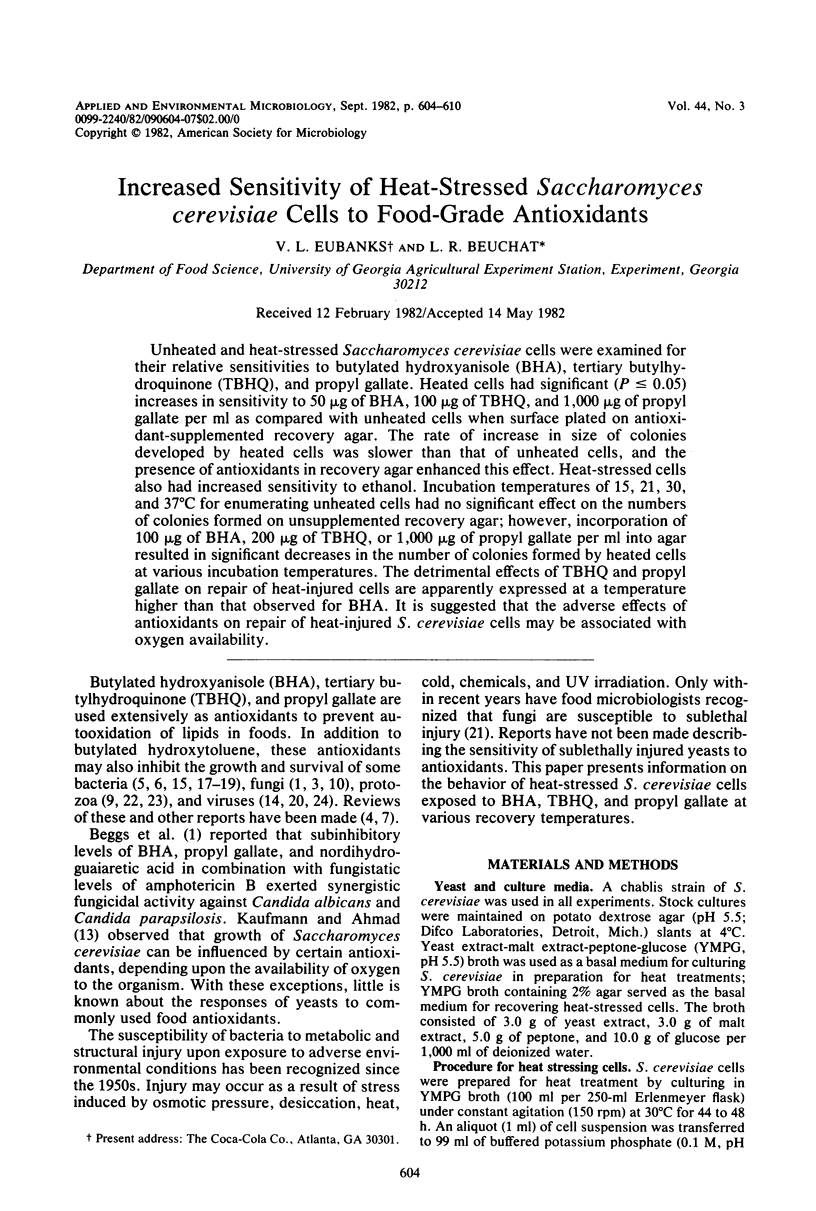
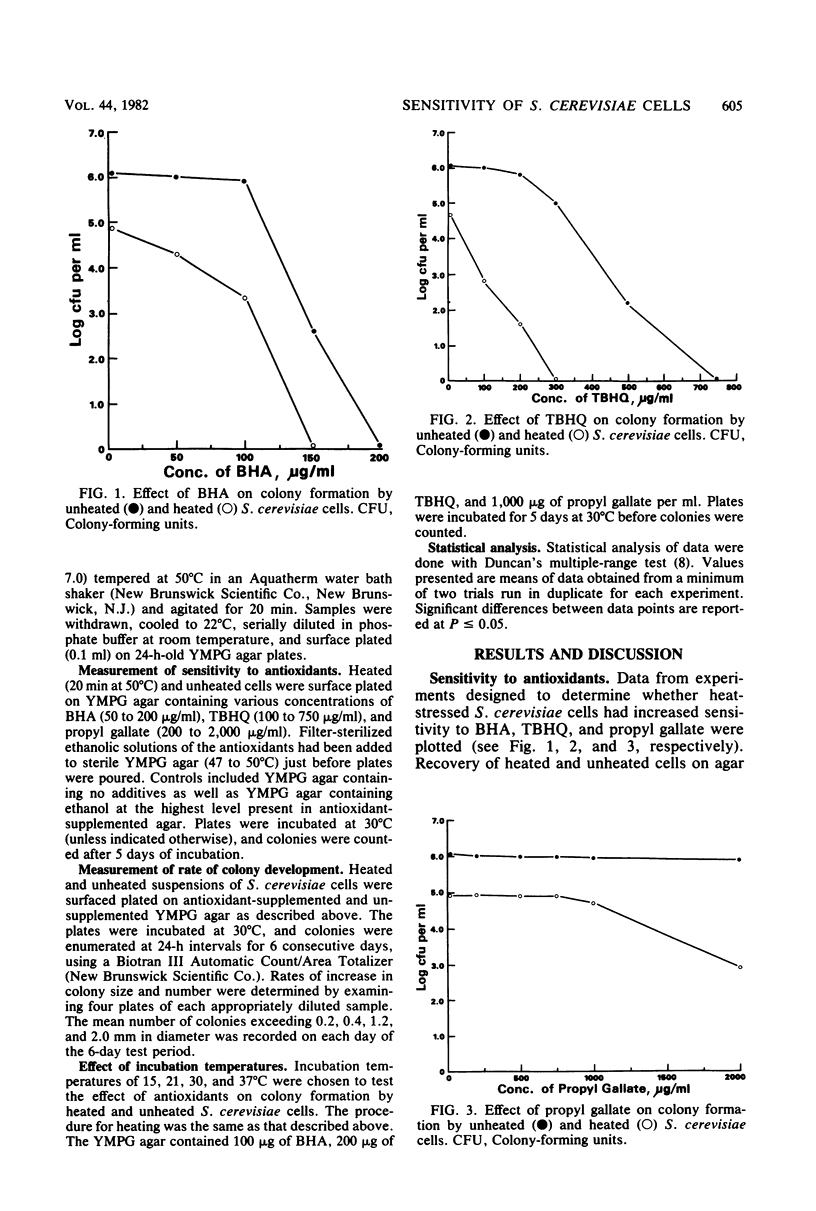
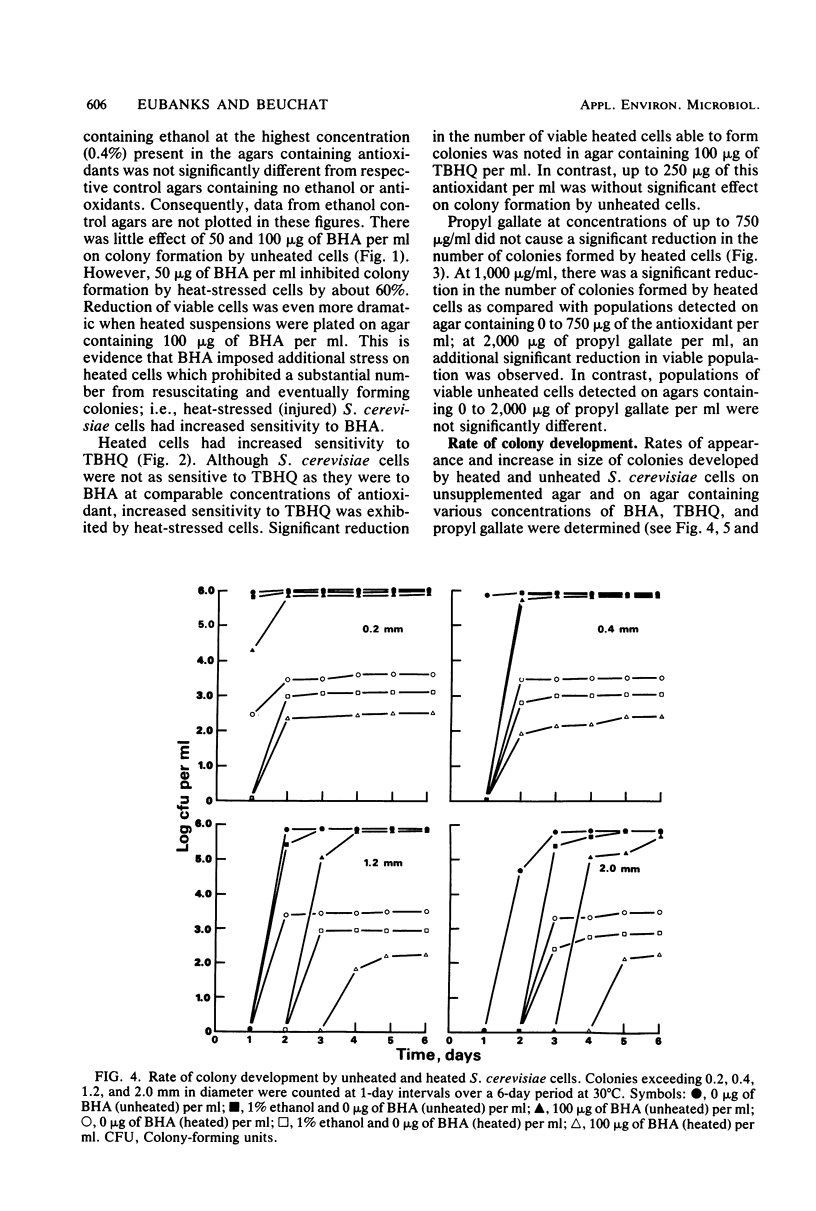

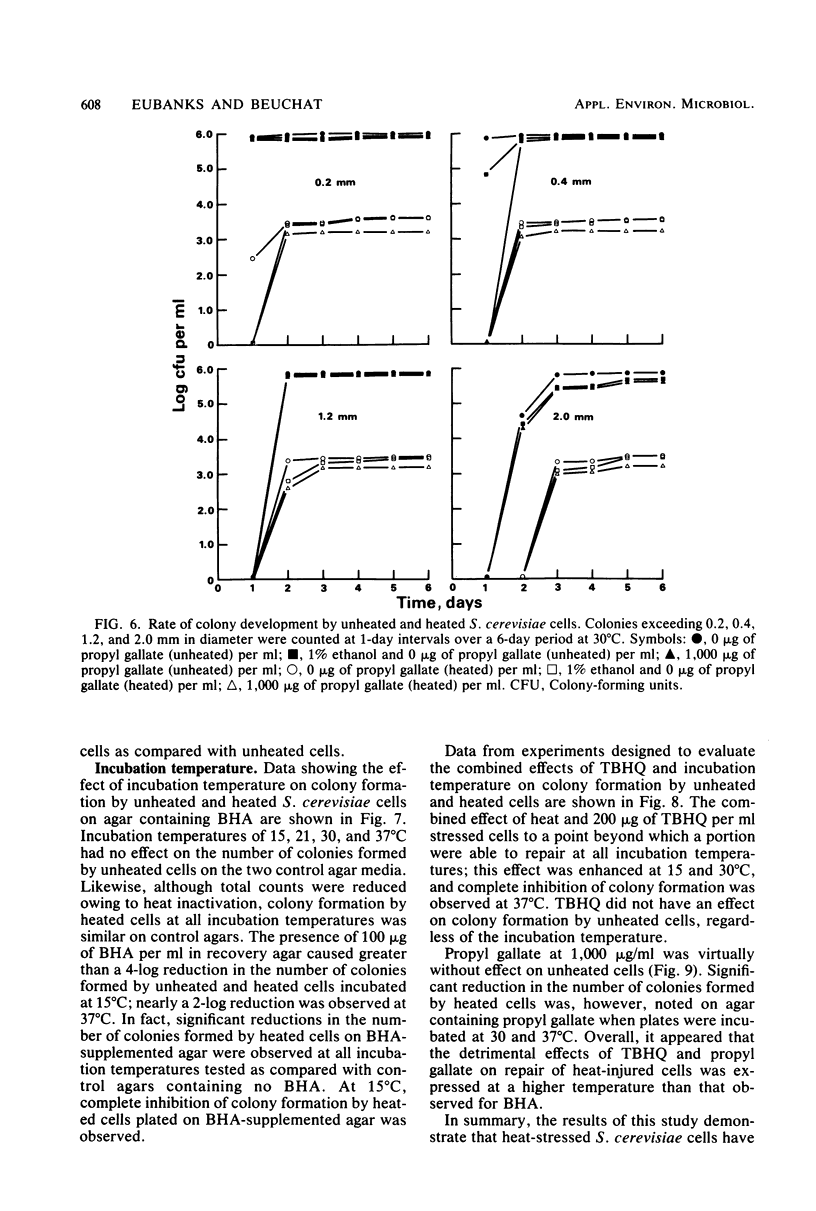
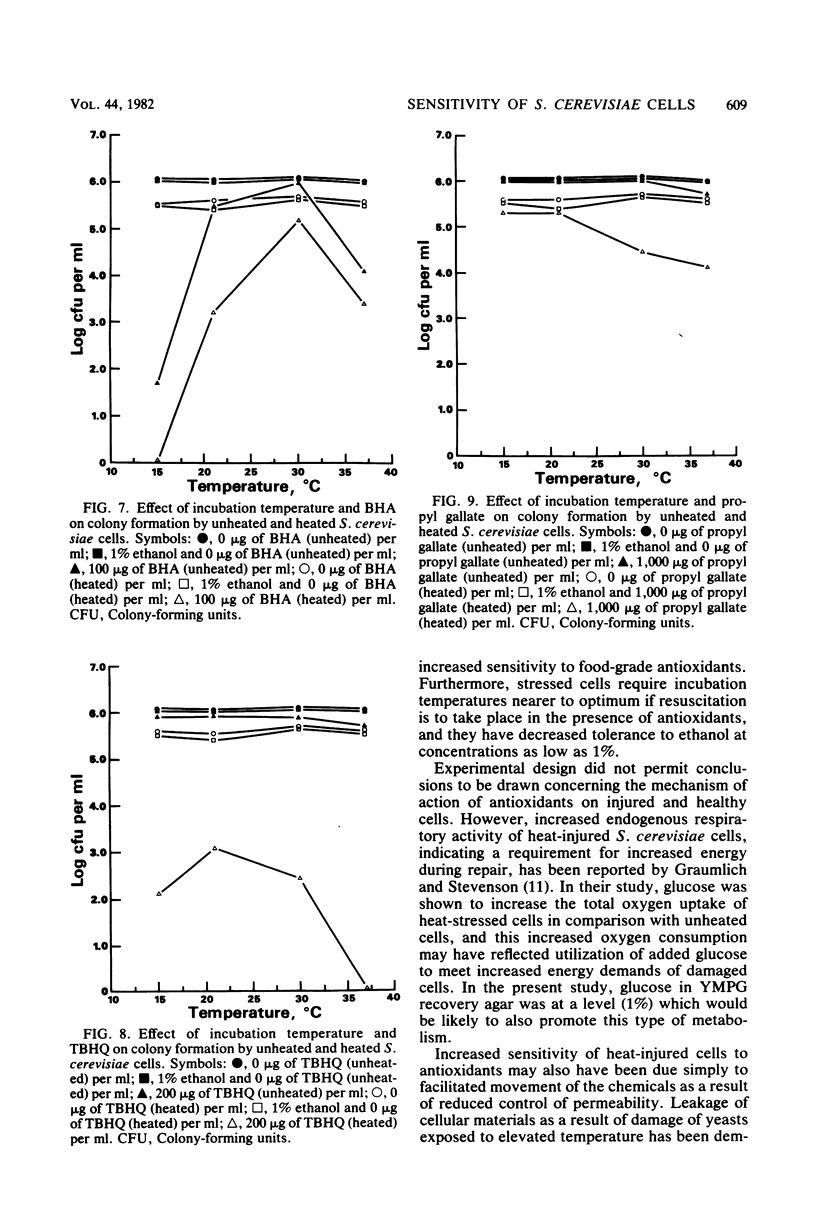
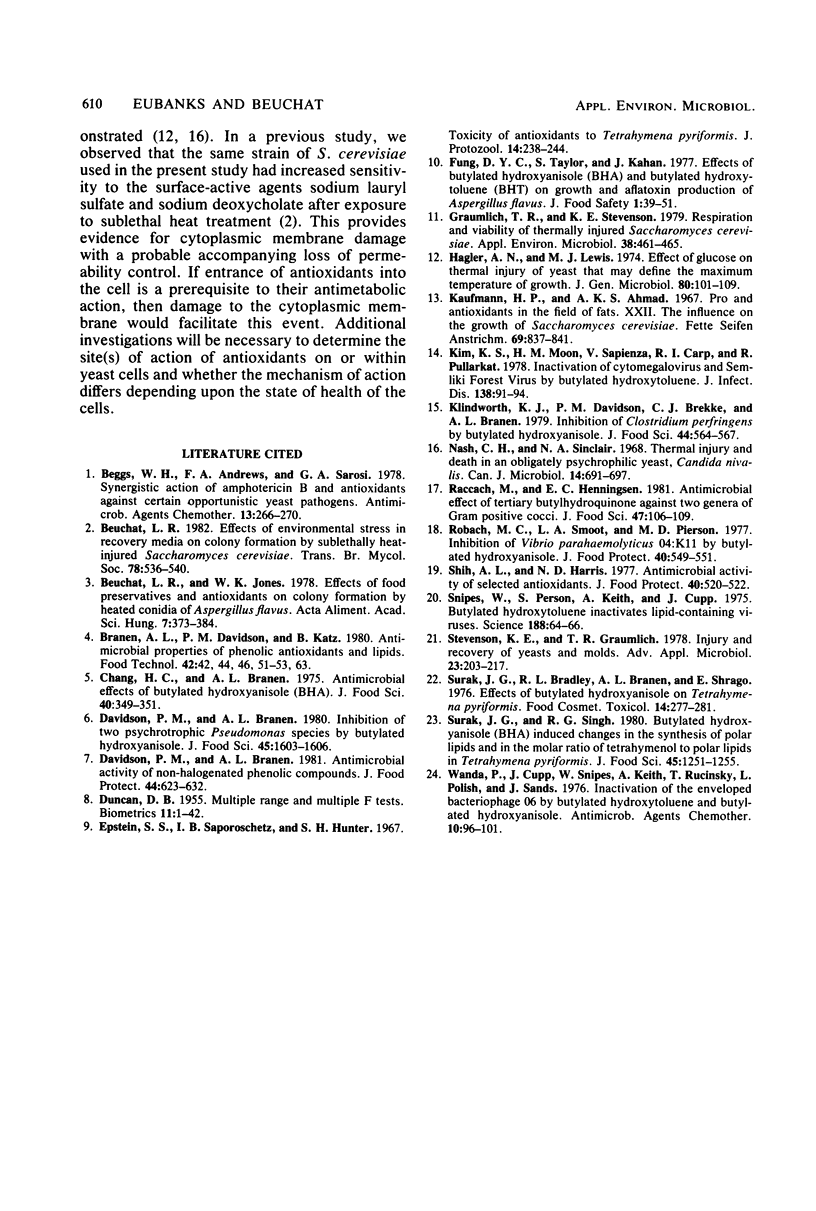
Selected References
These references are in PubMed. This may not be the complete list of references from this article.
- Beggs W. H., Andrews F. A., Sarosi G. A. Synergistic action of amphotericin B and antioxidants against certain opportunistic yeast pathogens. Antimicrob Agents Chemother. 1978 Feb;13(2):266–270. doi: 10.1128/aac.13.2.266. [DOI] [PMC free article] [PubMed] [Google Scholar]
- Epstein S. S., Saporoschetz I. B., Hutner S. H. Toxicity of antioxidants to Tetrahymena pyriformis. J Protozool. 1967 May;14(2):238–244. doi: 10.1111/j.1550-7408.1967.tb01991.x. [DOI] [PubMed] [Google Scholar]
- Graumlich T. R., Stevenson K. E. Respiration and viability of thermally injured Saccharomyces cerevisiae. Appl Environ Microbiol. 1979 Sep;38(3):461–465. doi: 10.1128/aem.38.3.461-465.1979. [DOI] [PMC free article] [PubMed] [Google Scholar]
- Kim K. S., Moon H. M., Sapienza V., Carp R. I., Pullarkat R. Inactivation of cytomegalovirus and Semliki Forest virus by butylated hydroxytoluene. J Infect Dis. 1978 Jul;138(1):91–94. doi: 10.1093/infdis/138.1.91. [DOI] [PubMed] [Google Scholar]
- Nash C. H., Sinclair N. A. Thermal injury and death in an obligately psychrophilic yeast, Candida nivalis. Can J Microbiol. 1968 Jun;14(6):691–697. doi: 10.1139/m68-115. [DOI] [PubMed] [Google Scholar]
- Snipes W., Person S., Keith A., Cupp J. Butylated hydroxytoluene inactivated lipid-containing viruses. Science. 1975 Apr 4;188(4183):64–66. doi: 10.1126/science.163494. [DOI] [PubMed] [Google Scholar]
- Stevenson K. E., Graumlich T. R. Injury and recovery of yeasts and molds. Adv Appl Microbiol. 1978;23:203–217. doi: 10.1016/s0065-2164(08)70070-4. [DOI] [PubMed] [Google Scholar]
- Surak J. G., Bradley R. L., Jr, Branen A. L., Shrago E. Effects of butylated hydroxyanisole on Tetrahymena pyriformis. Food Cosmet Toxicol. 1976 Aug;14(4):277–281. doi: 10.1016/s0015-6264(76)80289-1. [DOI] [PubMed] [Google Scholar]
- Wanda P., Cupp J., Snipes W., Deith A., Rucinsky T., Polish L., Sands J. Inactivation of the enveloped bacteriophage phi6 by butylated hydroxytoluene and butylated hydroxyanisole. Antimicrob Agents Chemother. 1976 Jul;10(1):96–101. doi: 10.1128/aac.10.1.96. [DOI] [PMC free article] [PubMed] [Google Scholar]


